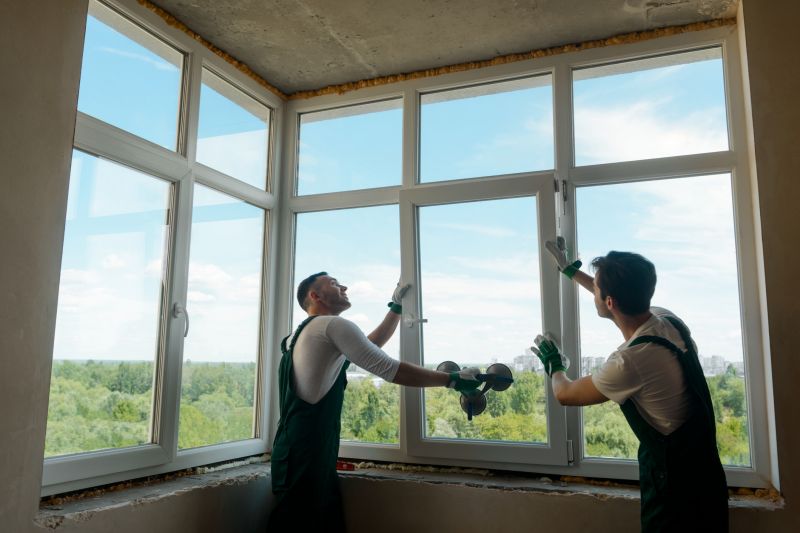Leading Selection of Products for Windows Setup and Configuration
Choose from a range of top products that help you configure and optimize Windows installations for maximum efficiency.
 Installing windows can significantly enhance the aesthetic appeal, natural light, and energy efficiency of a space. Whether for new construction, renovation, or replacement projects, selecting the right products for windows is essential to achieving the desired outcome. A variety of components are involved in a successful window installation, including framing materials, sealing products, hardware, and insulation. Each element plays a role in ensuring the window functions properly, provides durability, and maintains energy efficiency over time.
Installing windows can significantly enhance the aesthetic appeal, natural light, and energy efficiency of a space. Whether for new construction, renovation, or replacement projects, selecting the right products for windows is essential to achieving the desired outcome. A variety of components are involved in a successful window installation, including framing materials, sealing products, hardware, and insulation. Each element plays a role in ensuring the window functions properly, provides durability, and maintains energy efficiency over time.
Top Overall Option
Universal Window Installation Kit
A comprehensive window installation kit that includes essential components such as flashing tape, weatherstripping, sealant, and hardware. Designed for versatility, it accommodates various window types and sizes, providing a reliable solution for both DIY enthusiasts and professional installers. The kit emphasizes durability and ease of use, helping to ensure proper sealing and secure mounting for long-lasting performance.
Types of Products For Windows Installations
Window Flashing Tape
Self-adhesive tape used to seal and protect window edges from water infiltration, ensuring weatherproofing.
Weatherstripping
Materials designed to seal gaps around the window sash and frame, improving energy efficiency and reducing drafts.
Sealant and Caulk
Flexible compounds used to seal joints and cracks, preventing air and water leaks.
Window Hardware
Handles, locks, hinges, and latches that facilitate window operation and security.
Insulation Foam
Expanding foam used to fill gaps around window frames, enhancing thermal insulation.
Mounting Brackets
Support brackets that secure the window frame during installation, ensuring stability.
Sill Pan
A protective tray installed at the bottom of the window opening to direct water away from the structure.
Pry Bars and Removal Tools
Tools used for removing old windows and preparing openings for new installations.
Shims and Spacers
Adjustable supports that help achieve proper alignment and level installation.
Nailing Fin Sealant
Sealant applied around the nailing fin to prevent water intrusion during installation.
Screws and Fasteners
Securement hardware designed to hold the window frame firmly in place.
Exterior Cladding
Materials used to finish and protect the exterior face of the window opening.
Interior Trim and Casing
Decorative and functional trim pieces that finish the interior window edges.
Vapor Barriers
Materials that control moisture movement, protecting the building envelope.
Drainage Systems
Components that facilitate water runoff and prevent accumulation around the window frame.
Popular Choices
Widely used for sealing gaps and joints around windows to improve weather resistance.
Popular for reducing drafts and enhancing thermal performance in various climates.
Commonly applied for sealing cracks and joints in window installations.
Versatile hardware that adapts to multiple window styles and sizes.
Preferred for filling gaps and improving insulation around window frames.
Frequently used for ensuring a watertight seal during installation.
Popular for securing windows and providing safety features.
Chosen for finishing interior window edges with a clean, professional look.
Commonly selected to direct water away from window openings.
Often used to protect the bottom of window openings from water damage.
Popular for enhancing exterior durability and aesthetic appeal.
Frequently used for efficient removal of old windows before installing new ones.
Choosing the appropriate products depends on several factors such as the type of window being installed, the location within the building, and specific performance requirements. For example, some installations may prioritize insulation and weatherproofing, while others focus on ease of installation or aesthetic compatibility. Understanding the different types of products available can help homeowners and contractors make informed decisions that align with their project goals.
Proper installation is crucial to maximizing the lifespan and performance of windows. High-quality sealing tapes and weatherstripping can prevent drafts and water infiltration, while durable hardware ensures smooth operation and security. Additionally, selecting compatible framing materials and insulation products can contribute to energy savings and overall comfort. Investing in reliable, well-suited products can lead to long-term benefits, even though initial costs may vary.
In the Downers Grove, IL area, local suppliers and professionals can provide guidance on the best products suited for regional climate conditions. It is advisable to consider product compatibility, ease of installation, and warranty options when making a choice. By carefully selecting the right components, property owners can achieve functional, attractive, and energy-efficient window installations that meet their specific needs and preferences.
Key Buying Considerations
- Compatibility with the window type and size to ensure proper fit.
- Weather resistance and sealing capabilities suitable for local climate conditions.
- Ease of installation, especially if considering a DIY project.
- Durability and material quality for long-term performance.
- Compatibility with existing building materials and finishes.
- Availability of warranties or guarantees from suppliers.
- Cost-effectiveness balanced with quality and performance.
- Resistance to moisture, mold, and pests in the installation environment.
- Aesthetic compatibility with the overall building design.
- Environmental conditions such as wind, rain, and temperature fluctuations.
- Ease of maintenance and cleaning over the lifespan of the product.
- Compliance with local building codes and standards.
- Availability of technical support and installation guidance.
- Compatibility with energy efficiency goals, such as insulation and sealing.
